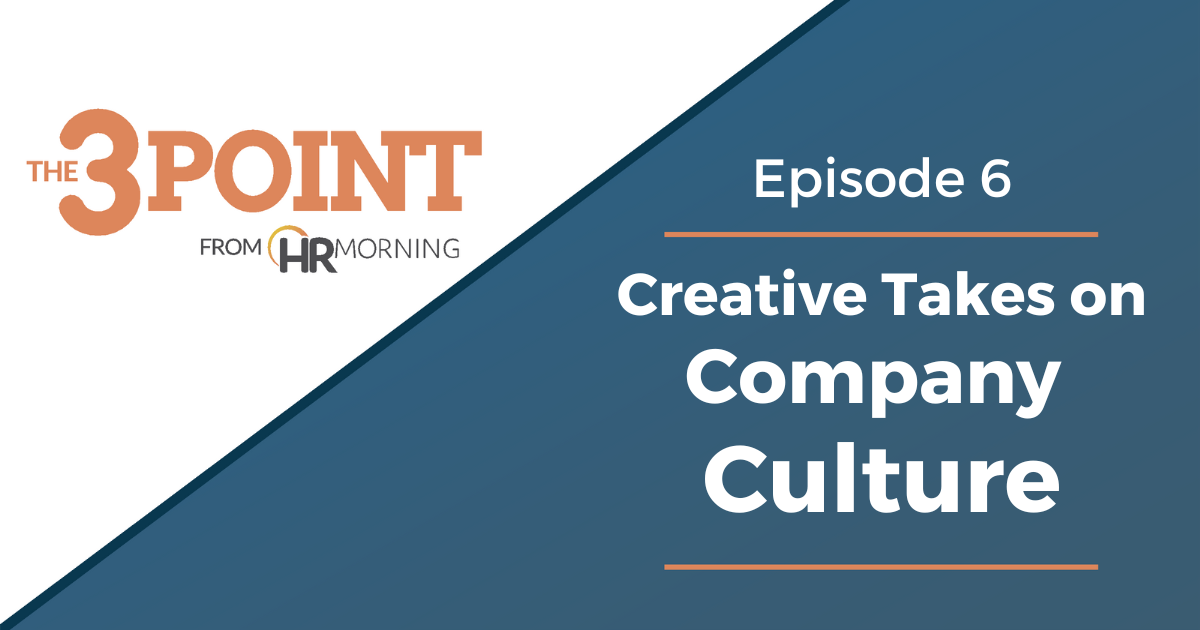Can you change company culture? Do you even want to?
Yes. And probably yes. We need creative takes on company culture these days because what worked before the pandemic probably doesn’t work now.
The biggest reason: Companies are different. Before the pandemic, 7% of employees worked remotely. Now, it’s more than a third, according to the Pew Research Center.
Companies have changed so culture has changed — organically at first. But now HR and other leaders have the opportunity to shape culture going forward.
New takes on company culture
Here, in our 3-Point from HRMorning video series, we have HR leaders and experts who’ve helped shape their company cultures. Now they work with employees and leadership to maintain thriving cultures that engage employees and set the pace for company growth.
Even if you love your culture, you can watch and listen for more from a few of our panel of experts. Their ideas will likely help you improve what already works.
Transcript (edited for clarity):
Company culture. Everyone talks about it. Most companies boast about theirs.
In fact, nearly all of the executives in a Korn Ferry study said culture is the most underrated factor in their company’s success.
How can so much ride on this mysterious thing we call culture?
We can’t see it. We can’t measure it. We can barely nail down one definition for it.
But here’s the thing: People can feel it. They feel culture or they don’t feel it.
Do employees feel your culture? Do they form it?
Here are three takes on how you can build up or build on a culture that matters to your employees.
Gordon: So you have to think about, well, why is this team working so well, but why does over there not work? So I would say that would be the first thing to think about is your teams. Because then if you’re able to role model that, other teams can see that and then they’re like, “Oh, I want that. Right? Why don’t we have that?” So you really do have to be able to say, “OK what is it about this team? Is it, they’re creating psychological safety? What is it that they’re doing together as a team?” And then once you’re able to pinpoint it, you can replicate it.
You might let culture grow organically.
Lawless: I think if you do push yourself to spend maybe an hour a month with a new client or a new colleague, or encourage your team to spend an hour with someone that they don’t know, I think that unlocks a ton of value because once you do it, it’s kind of like investing over time. That value starts to compound on itself.
Now, let’s say you want managers and employees to make an impact on culture.
Fish: And the biggest thing that you can do is teacher leaders to listen. And the best way that I know is through stay interviews. So stay interviews are a structured conversation. So it’s very proactive. Every single leader can be taught to do it. A production supervisor can be taught to do it. A food nutrition services supervisor can be taught to do it as well as a CEO.
Culture took a backseat during the pandemic. Let’s bring it back.Try to:
- Replicate what works. Sit down, find out what makes your best teams tick, then help other teams replicate it to build a winning culture.
- Let it grow. Give employees time to connect with each other and explore the culture that they’re in and where they’d like to take it.
- Talk about what matters. Have managers do regular stay interviews to create a culture where people want to stay.
Now’s the time to elevate company culture from an underrated factor to the winning factor.


